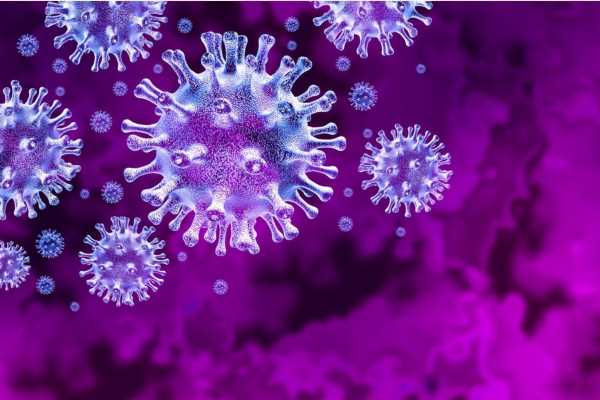In a recently published article in the journal Cancer Cell, scientists have demonstrated the incidence of severe acute respiratory syndrome coronavirus 2 (SARS-CoV-2) infection in cancer patients residing in Austria and Italy. The study reveals an induction in Omicron breakthrough infections in patients with hematologic and solid cancers.

Background
Severe acute respiratory syndrome coronavirus 2 (SARS-CoV-2), the causative pathogen of the coronavirus disease 2019 (COVID-19) pandemic, has been found to cause severe infections in immunocompromised patients, including cancer patients. Moreover, a relatively lower level of neutralizing antibodies in response to COVID-19 vaccines has also been observed in cancer patients, especially those receiving B cell-targeting therapies.
The emergence of SARS-CoV-2 variants with improved immune fitness, such as delta and Omicron variants, has caused a sharp increase in breakthrough infections even in fully vaccinated individuals. However, the vaccines still show high protective efficacy against severe and fatal infections. COVID-19 vaccines have shown acceptable efficacy against severe disease, even in Omicron-infected cancer patients. However, the isolation and quarantine measures associated with SARS-CoV-2 infection may impair the routine administration of anticancer therapy, which can reduce the survival prognosis in cancer patients.
In the current study, the scientists have assessed the incidence of SARS-CoV-2 infection in cancer patients throughout the pandemic.
Study design
The study included 3,959 cancer patients, of whom 77% had solid cancer, and 23% had hematologic cancer. About 69% of the patients did not receive any anticancer treatment at the time of COVID-19 vaccination. Regarding vaccine coverage, about 85% of the patients had received at least one vaccine dose, and 15% remained unvaccinated. The incidence of SARS-CoV-2 infection in these patients was assessed between February 2020 and 2022.
Important observations
SARS-CoV-2 infection was detected in about 24% of the patients during the study period. During the delta-dominated wave, vaccine breakthrough infection was observed in 43% of the patients. In contrast, a significantly higher percentage of breakthrough infection (70%) was observed among the patients during the Omicron-dominated wave. During both delta and Omicron waves, cancer patients receiving systemic anticancer treatment showed a significantly higher percentage of breakthrough infection than those not receiving treatment (83% vs. 56%).
Regarding disease severity irrespective of vaccination status, a higher frequency of COVID-19-related hospitalization was observed during the delta wave compared to that during the Omicron wave. However, a relatively shorter duration of hospital stay was observed in vaccinated patients compared to that in unvaccinated patients. In addition, only 9% of patients with breakthrough infections were admitted to the intensive care unit (ICU). This highlights the protective efficacy of COVID-19 vaccines against severe disease.
Humoral immune response to vaccination
To determine vaccine-induced antibody response against delta and Omicron variants, the scientists measured blood levels of anti-delta and anti-Omicron spike receptor-binding domain (RBD) antibodies in a total of 78 cancer patients. In the analysis, they also included 25 healthcare workers as controls.
In response to vaccination, healthcare workers showed higher levels of total anti-spike antibodies compared to cancer patients. The lowest level of wildtype RBD-specific antibodies was observed in hematologic cancer patients receiving B cell-targeted treatment, followed by hematologic cancer patients not receiving B cell-targeted treatment and patients with solid tumors. A similar trend was observed for delta- and Omicron-specific spike RBD antibodies.
The serum samples collected from hematologic cancer patients without B cell-targeted treatment and solid tumor patients significantly inhibited the interaction between wildtype/delta RBD and angiotensin-converting enzyme 2 (ACE2; host cell receptor for viral entry). However, a significantly lower level of inhibition was observed for patients receiving B cell-targeted treatment. Importantly, a marked reduction in inhibition of Omicron RBD – ACE2 interaction was observed for all patients with solid tumors and hematologic cancer.
Study significance
The study demonstrates an increased incidence of vaccine breakthrough infections but a reduced disease severity among patients with solid tumors and hematologic cancer during the Omicron wave compared to the delta wave.
The study also highlights that COVID-19 vaccine-induced antibody response is lower in cancer patients than in healthy individuals. The reduction in antibody response is highest among hematologic patients receiving B cell-targeted treatment. Overall, a significant impairment in vaccine-induced Omicron neutralization has been observed in cancer patients.
- Mair, M. et al. (2022) "Enhanced SARS-CoV-2 breakthrough infections in patients with hematologic and solid cancers due to Omicron", Cancer Cell. doi: 10.1016/j.ccell.2022.04.003. https://www.cell.com/cancer-cell/fulltext/S1535-6108(22)00165-9
Posted in: Medical Science News | Medical Research News | Disease/Infection News
Tags: ACE2, Angiotensin, Angiotensin-Converting Enzyme 2, Antibodies, Antibody, B Cell, Blood, Cancer, Cell, Coronavirus, Coronavirus Disease COVID-19, covid-19, Efficacy, Enzyme, Frequency, Healthcare, Hospital, Immune Response, Intensive Care, Omicron, Pandemic, Pathogen, Receptor, Respiratory, SARS, SARS-CoV-2, Severe Acute Respiratory, Severe Acute Respiratory Syndrome, Syndrome, Tumor, Vaccine

Written by
Dr. Sanchari Sinha Dutta
Dr. Sanchari Sinha Dutta is a science communicator who believes in spreading the power of science in every corner of the world. She has a Bachelor of Science (B.Sc.) degree and a Master's of Science (M.Sc.) in biology and human physiology. Following her Master's degree, Sanchari went on to study a Ph.D. in human physiology. She has authored more than 10 original research articles, all of which have been published in world renowned international journals.
Source: Read Full Article
